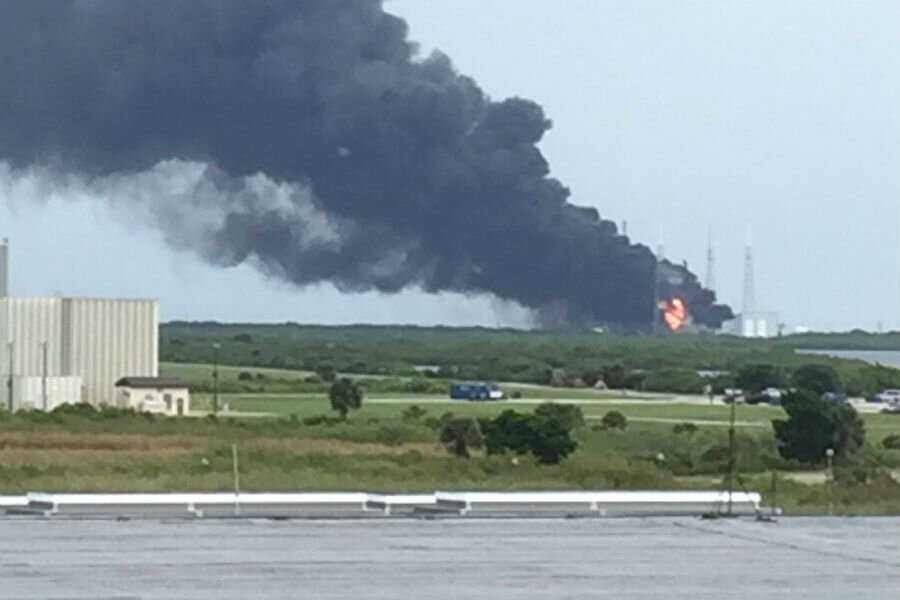How SpaceX is looking past its failed rocket launch
Loading...
The president of SpaceX, Elon Musk's space company, says it will aim to resume flights in November after its Falcon 9 rocket exploded on the launch pad during a Sept. 1 fuel test in Cape Canaveral, Fla.
"We're anticipating … being down for about three months, getting back to flight in the November timeframe," said Gwynne Shotwell, president and chief operating offer of Space X, at a satellite industry conference in Paris on Tuesday, according to Reuters.
SpaceX has not said how much damage the explosion caused in financial terms, though the Israeli communications satellite that it had planned to hoist into orbit – also destroyed by the launch pad fire – was worth about $200 million. The customer for the return mission, set to take place at NASA's Kennedy Space Center, has not yet been named, but a director of planning at the KSC told Reuters that the Center was "confident that SpaceX will understand and recover from what happened."
The quick return to the launch pad is characteristic of the company that has continued to push hard to stay well out in front of potential competitors in the spaceflight business. As The Christian Science Monitor reported on Monday, SpaceX is about five years older than Blue Origin, the aerospace company owned by Jeff Bezos:
That means it's much farther ahead in developing a reusable rocket, considered the top priority for commercial spaceflight companies that are trying to lower costs. SpaceX already has built a vibrant spaceflight business, with hundreds of millions of dollars-worth of contracts secured to deliver cargo for NASA to the International Space Station and communications satellites into orbit for commercial customers. The company was supposed to start shuttling astronauts to the space station next year, but all activity has been put on hold while SpaceX and federal agencies investigate the Sept. 1 explosion.
Shortly after the accident, Mr. Musk asked NASA and members of the public to help SpaceX figure out what caused the fire – a perhaps unprecedented move, noted the Monitor:
Is crowdsourcing becoming a trend in scientific investigations? Scientists have certainly embraced Twitter as a way to engage the public in research that some may have known nothing about before social media. The ESA Rosetta mission has its own Twitter account, with over 400,000 followers. NASA uses Twitter to advertise competitions for engineers and opportunities to see the launch of satellites like NOAA’s GOES-R....
Musk’s request seems to mark the first time that people or government have been asked to help figure out a space accident, however. That could be because private space flight is so new. Historically dominated by state-sponsored programs, it is only since SpaceX’s Falcon 1 rocket reached orbit in 2008 that private space travel has begun to look like a realistic possibility. As such, there has been less opportunity for cooperation – or conflict – between the public and private sectors than in other fields.
The accident is the second failure in 28 launches of the Falcon 9. The company has plans to carry out more than 70 missions, worth more than $10 billion.
This report contains material from Reuters.








